#Prehistoric site
Explore tagged Tumblr posts
Text






Crammond Mesolithic Site, Crammond, Edinburgh, Scotland
Excavations carried out on this spot in 1995 discovered the remains of what at the time was Scotland's earliest known settlement. The archaeologists discovered stake holes and pits, together with thousands of hazelnut shells and tools made of flint and chert.
The stone tools included arrowheads, scrapers, burins (for punching holes) and small blades for hunting and gathering activities. The stake holes marked the site of tent-like shelters where the people sat making and using these tools and also where they prepared and cooked their food. The pits were filled with the burnt shells of hazelnuts which were an important food source. These shells have been carbon dated to around 10,500 years ago (between 8,630BCE and 8,250BCE). The people who camped here so long ago were amongst the first to discover Scotland after the last Ice Age had ended, less than 1,000 years earlier. It marks the start of the Mesolithic period in Scotland. This lasted until the arrival of farming in the Neolithic period at around 4,000BCE.
Sea levels rose when the last Ice Age ended. This flooded the land (Doggerland) which had joined the south of Britain to the continent. People had to move because of this, some moving north along the coast. These explorers were skilled at gathering all the things they needed to survive from the countryside around them.
We need to imagine how Cramond looked 10,000 years ago. This was a great place to choose for a campsite. The sea and the River Almond offered plenty of food, such as fish and shellfish. The local forest provided other foodstuffs and resources, such as wild animals and birds, nuts, berries and plants, as well as animal skins for clothing and wood for fuel and building.
#ice age#stone age#bronze age#iron age#prehistoric#prehistory#neolithic#mesolithic#paleolithic#archaeology#hunter gatherer#prehistoric site#ancient sites#ancient living#settlement#shelter#community#Scotland#Edinburgh#Crammond
58 notes
·
View notes
Link
మన పురాతన భారతీయులు గొప్ప మేధావులనడానికి ఆధారం ఇదే! 10,000 సంవత్సరాల రహస్యం బయటపడింది!
Hey guys, ఈ రోజు మనం ఆలురుట్టి కొండలో ఉన్న చాలా రహస్యమైన గుహను చూడడానికి వెళ్తున్నాము. ఇక్కడున్న ఈ బాణం గుర్తు ద్వారం గుండా వెళ్ళమని చూపించడాన్ని మీరు చూడవచ్చు, ఈ ప్రదేశానికి సంవత్సరానికి 5 మంది కంటే తక్కువ మంది visitors మాత్రమే వస్తుంటారంట, అయితే ఈ గుహలో 5000 సంవత్సరాల నాటి శిల్పాలు ఉన్నాయని కొందరు చెప్తున్నారు. ఈ ప్లేస్ ని, Archaeological department వాళ్ళు రక్షించబడినప్పటికీ, ఈ ముళ్ల చెట్లు దట్టంగా పెరిగిపోయి కొంచం కూడా గ్యాప్ లేకుండా లోపలి పోవడానికి వీలు కాకుండా ఉంది. కానీ అక్కడ దూరంలో ఉన్న ఆ చెక్కడాలు మీకు కనిపిస్తున్నాయా. ఆ బండ మీద 2 చెక్కడాలు చెక్కబడ్డాయని మన కంటికికనిపిస్తుంది, ఇంకా దాని కింద ఒక పెద్ద గుహ కూడా ఉంది చూడండి.
ఈ రెండు ఆకారాలలో ఉన్నది ఎవరు? ఒకవేళ అందులో ఉన్నది బుద్ధ భగవానుడా? ఇవి దాదాపు 20 అడుగుల ఎత్తులో చెక్కబడి ఉన్నాయి కాబట్టి వాటిని నేలమట్టం నుండి చూసి గుర్తించడం చాలా కష్టం. first, నేను నా షూలను తీసేస్తాను, ఆపై మనం డ్రోన్ని ఉపయోగించి అందులో ఉన్న వివరాలను పరిశీలించూద్దాం. ఇవి బౌద్ధ మత శిల్పాలు కావు; ఇవి జైనమతం అనే ప్రాచీన మతానికి చెందినవి. ఈ rectangle మధ్యలో లోతైన ధ్యాన స్థితిలో ఉన్న ఈ ఆకారం మహావీరుడు అయి ఉండవచ్చు. ఆయనకు రెండు వైపులా ఉన్న అటెండెంట్లు చేతిలో ఒక విచిత్రమైనదాన్ని పట్టుకుని ఉండడం మీరు చూడవచ్చు. అవి ఎంటి��ి? Archaeologistsలు దీన్ని చామరం అని అంటున్నారు, చామరం అంటే చేతితో తయారు చేసిన ఒక విసనకర్ర లాంటిదని చెప్పవచ్చు. okay ఈ theory convincingగానే ఉంది, ఎందుకంటే నేటివరకు కూడా, కొందరు వ్యక్తులు దేవాలయాలలో చామరాలను ఉపయోగిస్తున్నారు.
కానీ మీ కళ్ళు సహజంగా ఈ జంతువులను చూస్తున్నాయి కదా, అవి చూడడానికి చైనీస్ డ్రాగన్ లాగ కనిపిస్తున్నాయి కదా? ఎడమవైపున ఉన్న డ్రాగన్ నవ్వుతూ ఉంది, కుడి వైపున ఉన్న డ్రాగన్ కొంచం కోపంతో ఉన్నట్టు ఉంది. అవి ఖచ్చితంగా సింహాలు కావు, ఎందుకంటే వాటికి కొమ్ములు ఉన్నాయి చూడండి. అయితే ఈ శిల్పంలో మరో 2 జంతువులు దాగి ఉన్నాయి. అదేంటని మీరు చెప్పగలరా? అయన కూర్చుని ఉన్న సింహాసానికి రెండు వైపులా 2 పాములు చెక్కబడి ఉన్నాయి. ఇది ఒక శరీరాన్ని పంచుకున్న 2 తలల పాము అని కూడా మీరు చెప్పవచ్చు. కానీ ఇక్కడ వాటి తలపైన ఈకలు ఉన్నడం మీరు చూడవచ్చు. మరొక వైపు కూడా అదే వివరాలతో ఈకలతో ఉన్న తలను మీరు చూడవచ్చు. రెక్కలు ఉన్న సర్పాలను మన భారతదేశంలో మాత్రమే పూజించలేదు, మెక్సికోకు చెందిన మాయన్లు ఇప్పటికి కూడా పూజిస్తున్నారు.
ఈకలతో ఉన్న ఈ మాయన్ దేవుడిని కుకుల్కాన్ లేదా Quetzalcoatl అని పిలుస్తారు. మరియు అనేక మాయన్ సైట్లలో, సరిగ్గా అదే ఆకారాన్ని మీరు చూడవచ్చు, ఇక్కడ తలపై రెక్కలతో ఉన్న నాగులను తెరిచిన నోరుతో ఉన్నటు చూపిస్తారు. మరొక వైపు, మీరు ముందు చుసిన చెక్కడం కంటే చిన్నగా ఉన్న వ్యక్తిని చూడవచ్చు, ఈయన మరొక జైన సాధువు, లోతైన ధ్యానంలో జ్ఞానోదయాన్ని పొందుతున్నాడు, కానీ ఈయన assistantsలు ఎక్కడికి వెళ్పోయారో తెలియదు భోజనం చేయడానికి అనుకుంటున్నాను. కానీ నేను ఈ చెక్కడాలను చూసి చాలా confusedగా ఉన్నాను, కచ్చితంగా మీరు కూడా confusedగా ఉండాలి. ఎందుకు? మీరు ఒక పురాతన శిల్పి అని, మీరు చెక్కే శిల్పానికి నేను గైడ్ చేస్తున్నానని ఊహించుకోండి. ప్రపంచంలోని అత్యంత కఠినమైన రాళ్లలో ఒకటైన గ్రానైట్పై దేనినైనా చెక్కమని నేను మిమ్మల్ని అడుగుతున్నాననుకుందాం.
మీరు ఎలాంటి ఆధునిక సాధనాలను ఉపయోగించకూడదు, ఎందుకంటే archaeologistsల ప్రకారం చూసుకుంటే, పురాతన శిల్పులు ఆదిమ ఉలి మరియు సుత్తిని ఉపయోగించే చెక్కారు. వాటన్నిటికంటే, వాలుగా ఉన్న ఈ surfaceలో 20 అడుగుల ఎత్తులో ఉన్న ఈ కొండపైన మీరు ఈ శిల్పాలను చెక్కాలి. కింది నుండి కనీసం నిచ్చెనను సరిగ్గా పెట్టడానికి కూడా flat ఐన surface ఉందా అని చూడండి? సరే, మీరు ఏదోక విధంగా నిచ్చెనను ఇక్కడ ఉంచారని అనుకుందాం, కానీ ఈ ఆకారాలను ఖచ్చితంగా చెక్కడానికి, మీరు వాటిని ఉలి మరియు సుత్తితో గట్టిగా కొట్టాలి. అప్పుడు ఈ నిచ్చెన ఇంకా నిటారుగా నిలబడుతుందా, లేదా పడిపోత��ందా? మీరు ఇక్కడ చూస్తున్నది ఒక అద్భుతం కంటే తక్కువ కాదని నా అభిప్రాయం. కానీ మనం ఇంకోక ఇంటరెస్టింగ్ ఐన detailని మిస్ చేసాము.మొదట, ఈ బండరాయితో ఉన్న layer ని కొంచం కొంచంగా చెక్కి తీసేసారు, ఒక నారెంజ్ పండులో ఉన్న తొక్కను ఎలా తీస్తామో అలా వాళ్ళు దీని తొక్కను తీసేసారు. వాస్తవానికి, వాళ్లు ఈ పై పొరను 3 అంగుళాల లోతు వరకు షేవ్ చేశారు.
ఎందుకలా చేశారు? ఎందుకంటే సాధారణంగానే రాళ్ల లోపల ఉన్న surface చాలా smoothగా ఉంటుంది. మీరు ఈ sides లను గమనిస్తే అది మీకు కనిపిస్తుంది. తర్వాత, వాళ్లు మరో 2 rectangular షేప్ లలో డిప్రెషన్లను తయారు చేసి, ఆపై దాని లోపల ఈ బొమ్మలను చెక్కడం ప్రారంభించారు. బహుశా ఈ గుహ లోపల మరిన్ని చెక్కడాలు ఉన్నాయేమో? ఇది 60 అడుగుల కంటే ఎక్కువ పొడవుగా విస్తరించి ఉన్న ఒక పెద్ద గుహ, ఇంకా ఇది entranceలోనే 8 అడుగుల ఎత్తు ఉంది మరియు మీరు లోపలికి వెళ్లే కొద్దీ ఎత్తు తగ్గిపోతు ఉంది. ఇది సహజమైన గుహనా? లేక artificialగా దీన్ని ఎవరైనా తయారు చేశారా? సుమారు 10 అడుగుల ఎత్తులో, మీరు ఈ రహస్యమైన గీతను చూడవచ్చు. ఇక్కడే మీరు చూసారంటే, పురాతన శిల్పులు సహజమైన శిలలపై చాలా జాగ్రత్తగా పని చేశారని మీరు గ్రహించారు. ఇది కేవలం రాతిపైన చెక్కిన గీత మాత్రమే కాదండి. ఈ గీత పైన, రాయి చాలా మందంగా ఉంది, ఇది కనీసం ఒక అంగుళం వరకు మందంగా ఉంటుంది మరియు ప్రతిదీ చూడడానికి కఠినమైనదిగా కనిపిస్తుంది.
- Praveen Mohan
#underground bed#ancient#Mysterious cave#advanced technology#Jainism#Ancient alience#Cave paintings#ancient India#Indian temples#Prehistoric site#నిజమైన చరిత్ర#ప్రవీణ్ మోహన్ తెలుగు
1 note
·
View note
Text



From a batch of attacks I did yesterday
OkoSwiata/SHARA_ISHVALDA/albluu
#dinosaur#monster hunter#prehistoric#monster#shara ishvalda#artfight 2024#artfight is like a drug to me#bless tumblr for being the only site i can post batches of these because my compositions are never the same size
275 notes
·
View notes
Text



HI GUYS I'M RUNNING A PRINT SALE!!
I'm very excited about it because it will be my very first print sale ever. But a little bit of background before I go into that because I feel like it's warranted here on Tumblr. So over on bluesky, I did a December challenge where every day in December, I drew a designated prehistoric animal, most of which were dinosaurs, but not all of them. It was the first challenge of it's kind I've ever done, and I was incredibly proud of myself for finishing it along with all of the work and the holidays too. For once, I finished a 31-day art challenge. And then I didn't post it here on Tumblr. OOPS. Don't worry, I plan on bringing them all over here in March (the next month of 31 days), but if you'd like to see them all early, they are on my website in my print section. And all of them are currently available for purchase, with the lovely sale pitch of: Free Shipping on orders over $50. And yes, that works for ALL of my prints, the dinosaur ones are just featured at the moment. I'm really excited to see how it goes!
Unfortunately, I can only fulfill in the US, mostly because the prices of shipping overseas are ridiculous, but also because EU currently set new laws on small businesses and products coming into the country. So until that is sorted, only the US shipping for now. I hope you can understand.
And yeah, that's about it. Print Sale on my website! I still get a ton of support from my followers here and just from this site in general so it felt remiss to not advertise this sale here too. The prints are not super expensive (if anything the shipping might be more so the savings are good) and are of incredible quality, I check each one before they are sent out and you get a nice little personal drawing from yours truly :) Thank you in advance and I'll talk to you all soon <3
#prints#dinosaur#paleoart#prehistoric#art#my art#my store#my prints#should i have uploaded them here too? yes#but i was already a day late on bluesky and it was so much more time to crosspost#you have no idea#i didnt share them anywhere else#just bluesky#they will be shared here too i promise#i havent abanonded this site it still feeds me#thank you for all the continued support!#laur is a weenie
35 notes
·
View notes
Text
Paleolithic Media Catalogue
Hello everyone :) Short story first: When I began brainstorming for my prehistoric story, I started wondering what other prehistoric fiction there is out there. I was not familiar with it and have not seen much. That's when I started my grand literature review and began a search for what fiction exist out there. I wanted to know what kinds of stories are being made with this time period. What are the common themes or recurring ideas (I found lots of humans and dinosaurs works. And time travel). Since I've had a growing collection on my computer, I decided I should keep on enlarging it and put it online. It's nowhere near complete. I'll slowly keep accumulating the collection as I find more. I only have fiction books and comics right now. I still need to work on the film section.
You can access the blog here!
***
As for where I am in my reading, the one's I've finished reading are Earth's Children series (book 1-4. Dropped it afterwards lol. I made a post on with fanart) Dance of the Tiger and it's sequel Singletusk (They were good! I'll upload my review on the blog), and Sisters of the Wolf (It was ok!). I got my hands on The Inheritors and excited to start reading it. I REALLY want to read the Shiva trilogy, but I found no PDF online... and it's out of print :( There is certainly old copies on ebay. And I want to read Chronicles of Ancient Darkness. There seem to be lots of good books out there.
#For whomever might find it useful... I'm doing this#I actually found another huge catalogue by an awesome person called Stephen Trussel#However their site has not been updated since 2016#I've linked their site on my blog when referencing the ENG translation for 'paris before man'#I'll make a paragraph dedicated to that site too#This has gone beyond my initial literature review lol#But for someone writing in this genre.. I've got to get to know it well#Because If I do end up publishing it I KNOW for sure it will be set up against other prehistoric fiction#mainly earth's children series#LITERALLY every book I checked had people in the reviews comparing it to Auel's series. Like it's the blueprint of prehistoric fiction#Like it's 'The Lord of the Rings' of its' genre.#and since it's a graphic novel maybe it will be compared to other comics?? Which I haven't found a lot YET#Emmanuel Roudier's work looks SO GOOD#I say looks because it's in French and I can't read French#I'm tempted to try translating it with what little French I learnt from public school and actually learn French in the process#Mezolith is great but it's not a full story. Just small snippets/short stories#Same with Tiger Lung. It's great. Also very very short. I recommend both.#I have not read the mangas yet. I read the first few chapters of Grashros and it's 100% Shounen stuff so far lol
55 notes
·
View notes
Text









#dinosaurs#dinosaur fossils#Comptonatus chasei#Isle of Wight#England#University of Portsmouth#prehistoric creature#fossilized footprints#Journal of Systematic Paleontology#Nick Chase#excavation site#Mary Anning#paleontology#Compton Bay#dinosaur species#skeleton
16 notes
·
View notes
Text

Prehistoric site of Glozel, Bourbonnais region of France
French vintage postcard
#postkarte#postal#site#ansichtskarte#french#tarjeta#ephemera#postcard#photography#carte postale#vintage#briefkaart#france#glozel#prehistoric#sepia#photo#bourbonnais#postkaart#region#historic
2 notes
·
View notes
Text
Uffington White Horse
A prehistoric monument built sometime in the late Bronze Age or early Iron Age, this land art was made with trenches filled with white chalk. Name: Uffington White Horse Lat, Long: 51.5780454,-1.5667819 Location: Uffington, UK

View On WordPress
2 notes
·
View notes
Text



🦴 Skelos Badlands Sounds - Prehistoric Caverns 🔥
Built off the backs of massive creatures lost to time, the caves hold pockets of lava leisurely spouting through the ground, sometimes flooding them entirely. Listen to the lava snake its way through these echoing halls.
photos by CatbatQuartet
#Spyro The Dragon#Spyro Soundscapes#Ripto's Rage Soundscapes#autisms activated upon coming up with this name#can't stop thinking *Birdemic 2 voice* Prehistoric Birds?#Spyro#Soundscapes#Another Fun Behind The Scenes Fact: if you've been reading all the tags or digging into the makeup of the custom gens#You've probably noticed how I tend to use Mids-to-High-Bass river water pitched down#in order to turn 'running water bubbles' into 'lava/boiling tar bubbles'#But to give this 'cave lava' environment that tangible indoor echo#i used one of the site's recordings of cave water instead
2 notes
·
View notes
Text
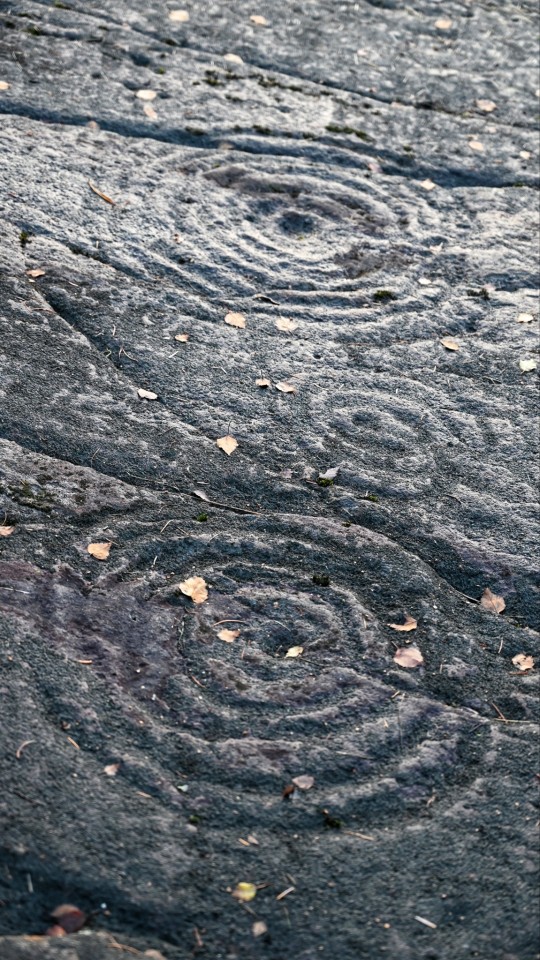

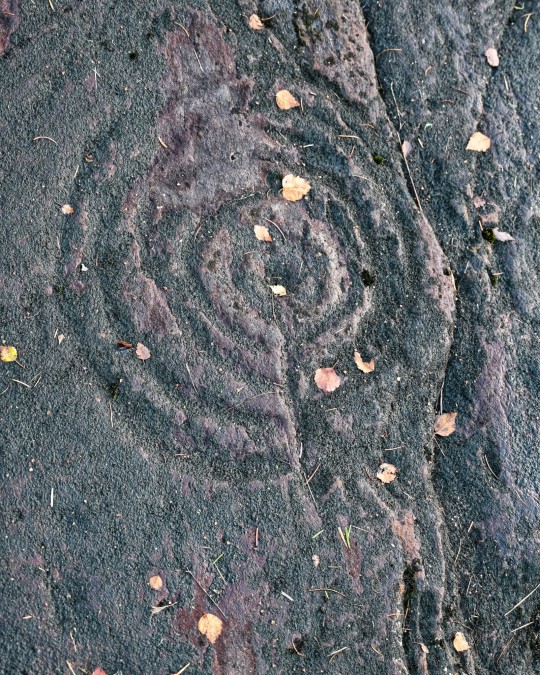
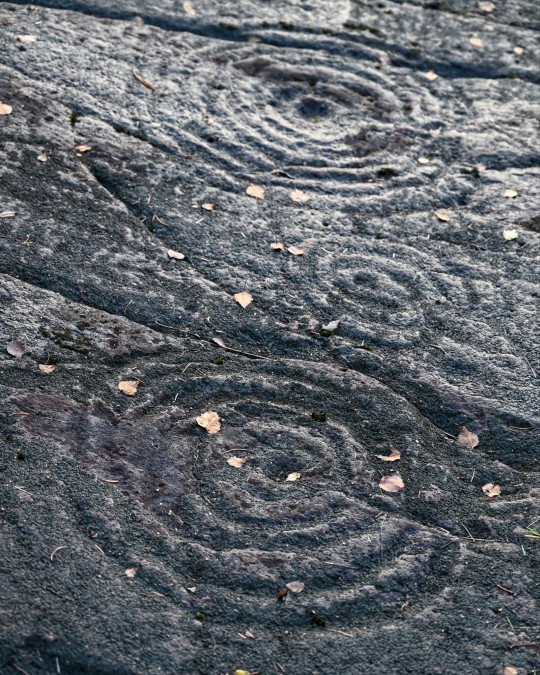
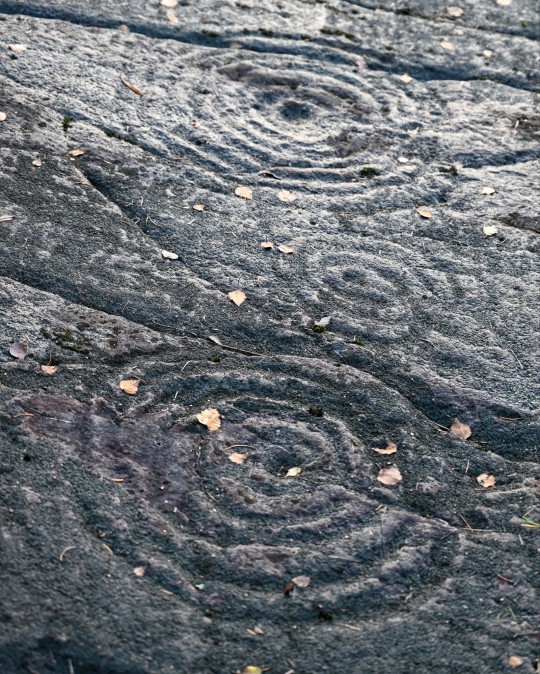
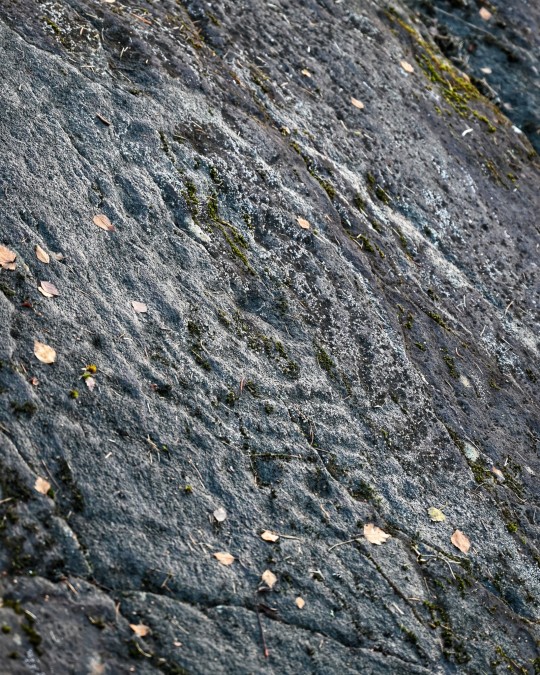
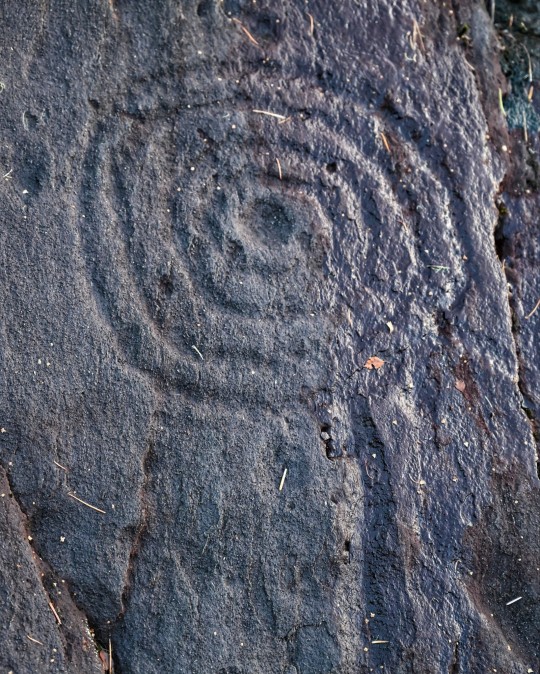
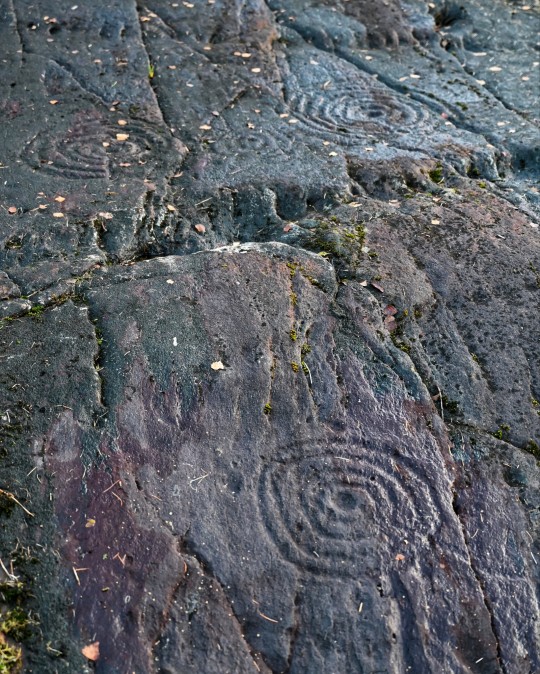
Achnabreck Prehistoric Rock Art Panels, nr. Lochgilphead, Argyll, Scotland
#ice age#stone age#bronze age#copper age#iron age#neolithic#mesolithic#calcholithic#paleolithic#prehistoric#prehistory#cup and ring#rock art#archaeology#landscape#ancient craft#ancient sites#ancient cultures
1K notes
·
View notes
Text
Bioarchaeological and paleogenomic profiling of the unusual Neolithic burial from Grotta di Pietra Sant’Angelo (Calabria, Italy)
Published 24th July 2023
Study of a Neolithic burial with unusual placement at a rather high altitude, far from inhabited areas, lack of funerary equipment and prone deposition of the body found located in Grotta di Pietra Sant’Angelo, Southern Italy.

geographical location, excavation area and skeletal remains from the burial
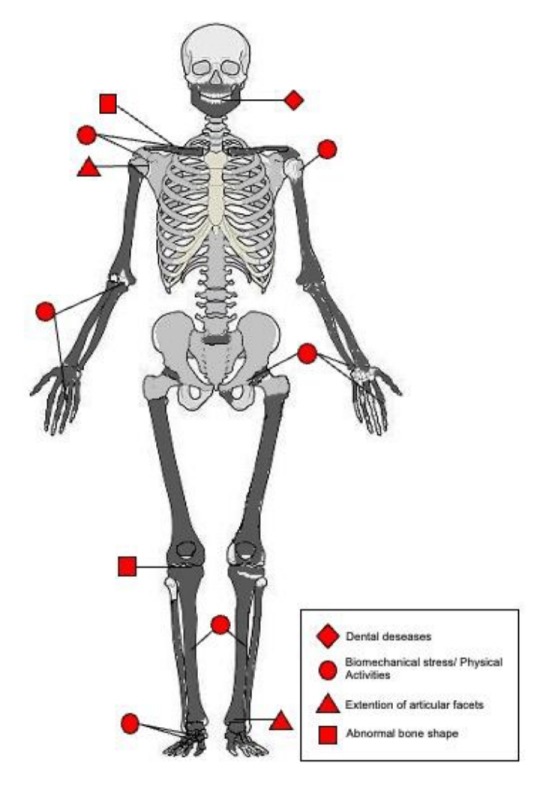
The individual is suspected to be an adult 30 years old male and 164cm tall.
Abnormal bone formation or destruction patterns were observed at the joints. Marginal osteophytes were discovered on the proximal epiphysis of the right ulna and distal epiphysis of the right and left radius as well as on the left acetabulum. Depressed surfaces with smooth edges were observed on the right distal surface of humeral trochlea, on posterior surface of the left and right tarsal navicular bones and on the first proximal phalanx of the right toe. These characteristics are typical of osteochondritis dissecans, a pathological condition.
Extreme wear patterns on the teeth were present represented in loss of crown height in the lower incisors, almost absent dental enamel from the occlusal surface and multiple fractures and chips in their teeth, causing a large reduction in tooth size. alveolar bone. Small amount of calculus on the teeth surfaces were also identified. CT-investigation of the jaw revealed a generalized bone absorption at the alveolar level, indicating a periodontal disease that could have led to the loss of the maxillary second premolar.
It is suggested this individual had a rather active lifestyle/occupation that remained consistent throughout their life.
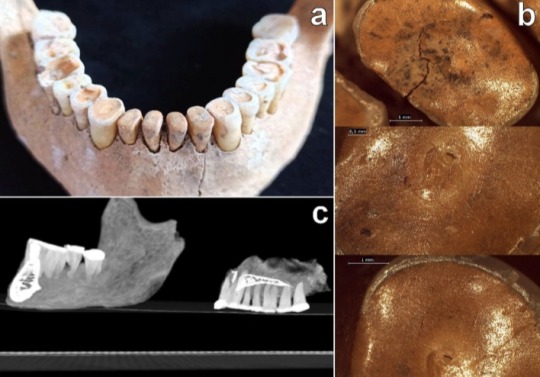
Mandible jaws, stereomicroscopic images of the occlusal surfaces of lower incisors and canines, and CT scan of mandible jaws
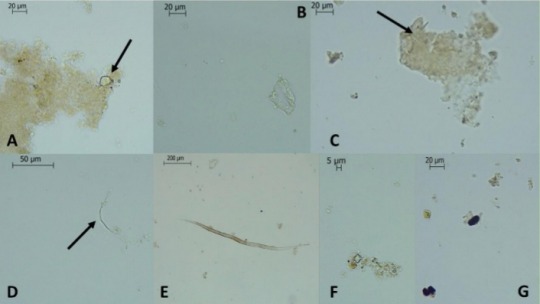
Starch granules found in the dental calculus fleck
Microdebris analysis of the dental calculus revealed the presence of a variety poorly preserved microremains, most of which were consistent with plant tissues, starch granules and a trichome. These micro remains were not identifiable to a species or family level. It is hypothesized that these remains indicate the consumption of starchy food and leafy crops and presence of remains such as fibers, mineral grit may have contributed to the dental wear of the individual and could also be associated with occupational activity.
Further study into the dental material of this individual also revealed the presence of several host-associated bacteria, among which are different members of the genera Treponema, Prevotella, Streptococcus and Methanobrevibacter. .etagenomic analysis highlighted the persistence of Treponema denticola, Tannerella forsythia and Porphyromonas gingivalis, known to be strongly associated with periodontal disease and a higher risk of developing esophageal cancer, diabetes mellitus, and are proposed as a risk factor for other several syndromes. More present bacterias of interest include Aggregatibacter, Cardiobacterium, and Eikenella corrodens that could be in rare cases associated with the development of infective endocarditis. The presence of dental pathologies and the detection of amylases are indicative of the consumption of a carbohydrate-rich, typically Neolithic, diet.
DNA was extracted from the molar to test for endogenous DNA persistence and provide a genetic profile of the individual.
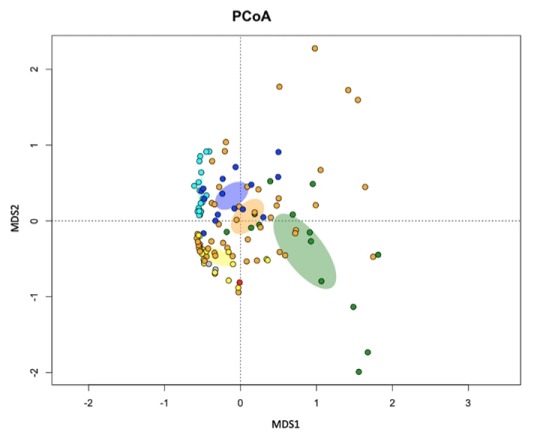
Principal Coordinates Analysis. Male individual (red) and 114 samples from Neanderthal (green), pre-agricultural (orange), Neolithic (yellow), pre-antibiotic period (blue) and modern-day humans (light blue).

Phylogenetic reconstruction of ancient K-related mitochondrial lineages, PCA projection of individual into the variability of ancient Italian and Mediterranean Neolithics, the distribution of G2a-related Y-chromosome lineages in ancient Europe between 8000 and 2500 BCE and 2500 BCE—1500 CE, individual (blue dot) projected into the variability of modern Italians clusters
Thia genetic data shows that this individual falls into the variability of the Italian and Mediterranean Neolithic, near the Peloponnesian and Anatolian Neolithics.
The cause of the unusual burial of this individual is still undetermined but there are a few suggestions:
Similarities can be found with the infant burial of Grotta di San Michele in Saracena and in the funerary area of the Neolithic village of Favella, indication of relation to their burial tradition and possible place of origin. However, the social meanings that underlie the heterodox funerary behaviour expressed in Grotta di Pietra Sant’Angelo are not certainly known.
The position of the body could be caused due to extreme fraility of this individual, the possible presence of ropes that kept the limbs together, the arrangement of the body with stones could be associated with locking the body in the lying position or the body has been arranged in such a position during the burial (either at a moment close to death or within 24–36 hours of death)
Some of the evidence could suggest the persistence of a non-specific inflammatory state with potentially fatal consequences. The possibility that the individual may have died away from his community would explain the difficult to reach the location of the burial. Despite the lack of a clear funerary equipment, the burial itself could be defined as the expression of carefully planned social behaviour, especially considering the difficulties that arise in accessing the area.
Source:
2 notes
·
View notes
Text
What is known as King Arthur's 6th century Hall is a Neolithic period of 3000 B.C.E. The structure is located in Cornish Bodmin moorland of southwest England.
A lot of Neolithic sites in the British Isles are attributed to folklore characters. Like how stone age hill forts became Fairy Mounds and Stone Henge to wizards.
#king arthur#medeival#archeological site#prehistoric#neolithic#stone age#historical misconception#round table#cornwall
0 notes
Text
I often think about the remains of a Neolithic woman found at a Prehistoric site in Scotland who was isotope tested and found to have been born in southern England and lived there for a significant portion of her life before relocating to northern Scotland. Her life predated the introduction of horses to Britain so she would have had to walk 700+ miles during her life to get to the place she was ultimately buried. What motivated her to do that? What drove her from her home and to a colder and harsher climate? Was it conflict? Was it wanderlust? Was it love? I can’t remember the name of the site but I think I remember other nearby remains in the group tomb had been tested and found to have been lifelong locals so she was probably an outlier in her new community.
9K notes
·
View notes
Text




lovely little guy we saw near the remains of the Tarxien Temples, Malta
#guinea pig#animals#nature#just a little guy#cute#prehistoric#neolithic#historical sites#malta#valletta malta
1 note
·
View note
Text

Salomon Reinach and his team digging up the prehistoric site of Glozel, Bourbonnais region of France
French vintage postcard
#briefkaart#photography#prehistoric#vintage#tarjeta#postkaart#french#postal#digging#site#photo#postcard#historic#carte postale#region#team#ephemera#salomon#reinach#sepia#france#bourbonnais#glozel#salomon reinach#ansichtskarte#postkarte
2 notes
·
View notes
Text
Vela Luka and the Vela Spila Cave
#ancient caves croatia#ancient history korčula#best views in vela luka#caves near korčula#dalmatian prehistoric caves#hiking to vela spila#korčula archaeological sites#korčula island history#prehistoric caves croatia#things to do in vela luka#vela luka attractions#vela luka cave tour#vela luka cultural center#vela luka outdoor activities#vela spila archaeology#vela spila cave hike#vela spila discoveries#vela spila guided tours#vela spila history#vela spila museum
0 notes